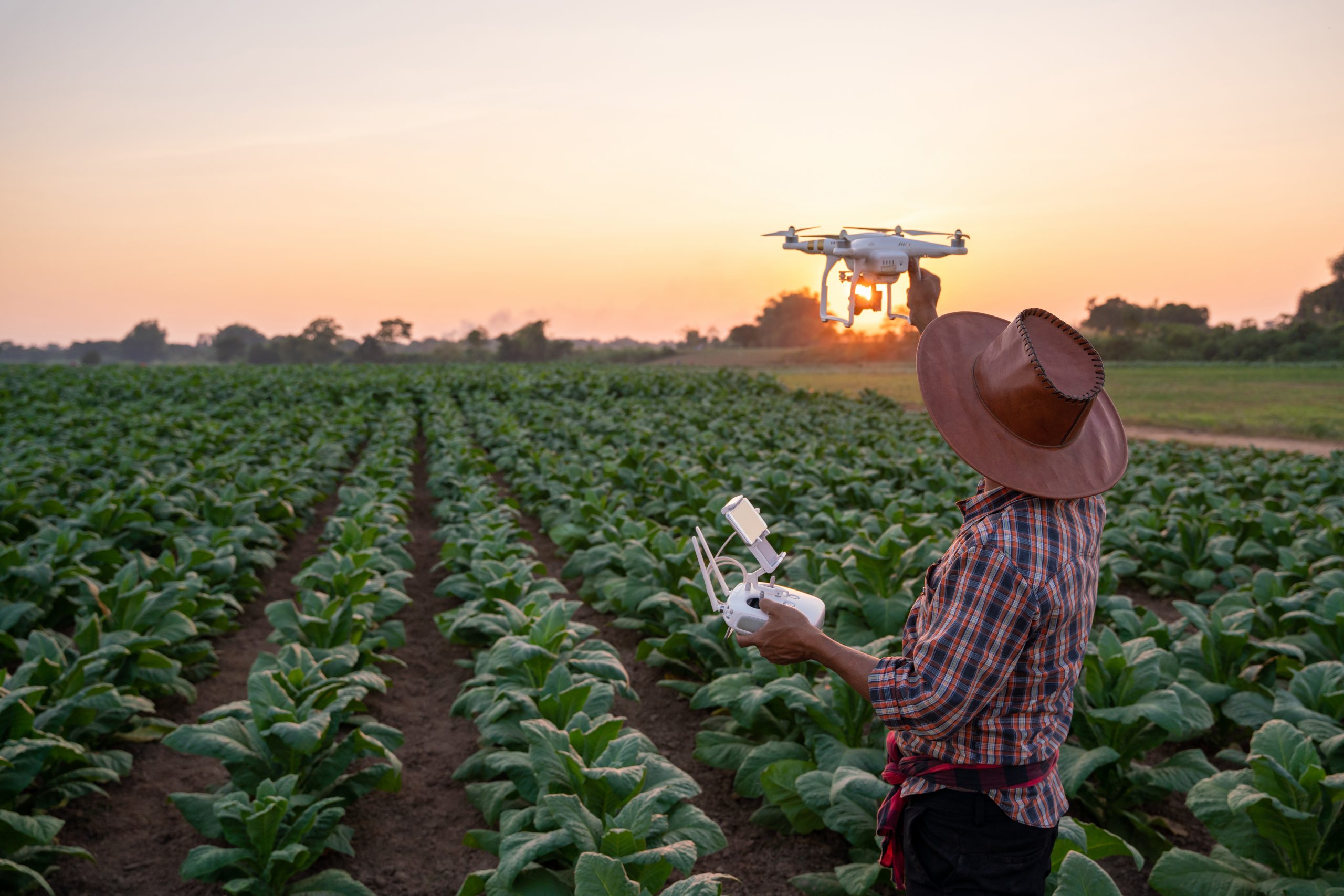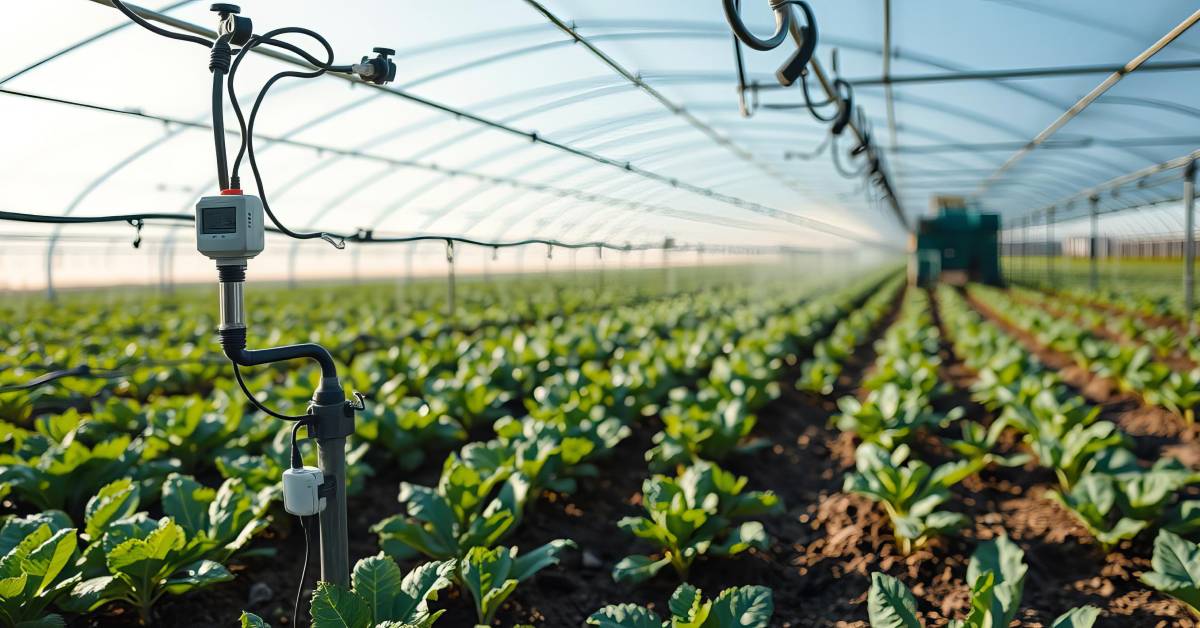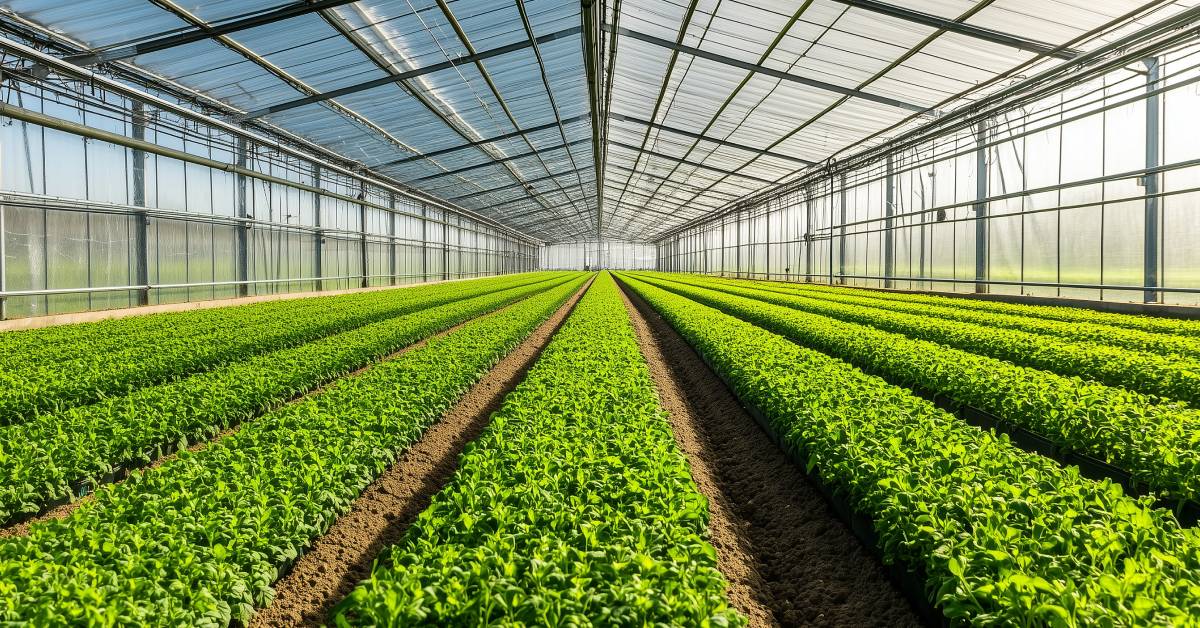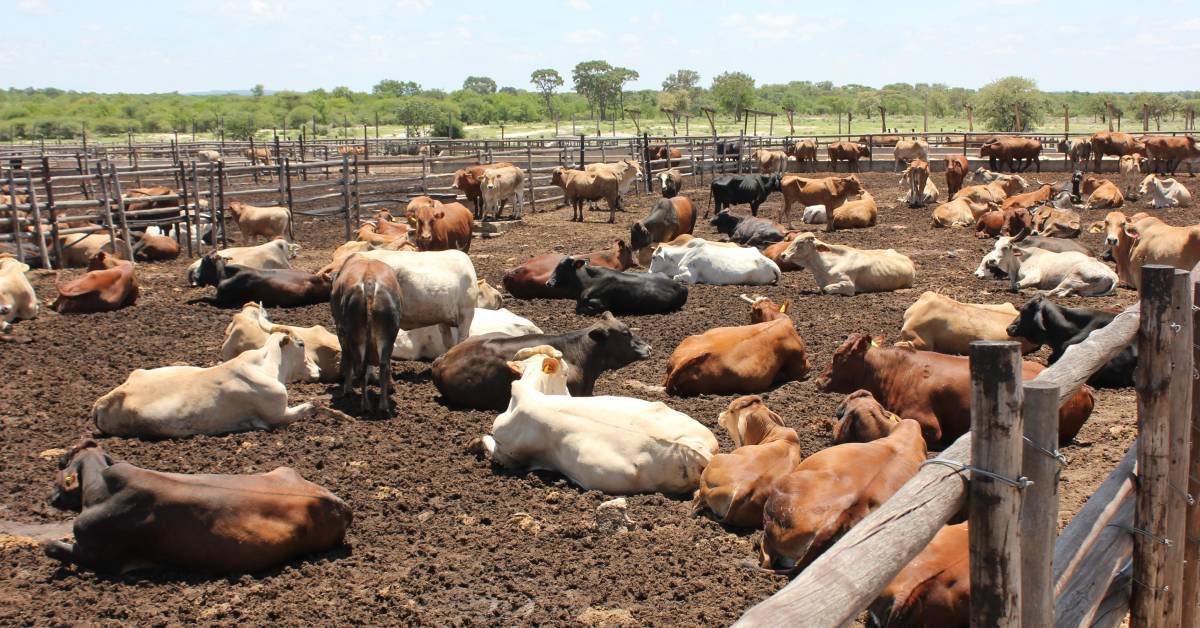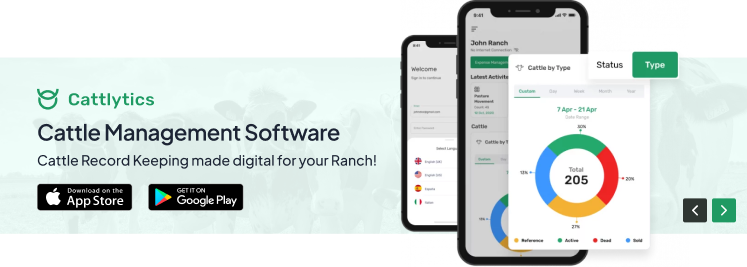Drone technology is a surprising advancement of our time. It is altering industries and reforming how businesses run. Agriculture is one industry that benefits the most from it.
Thanks to high-tech drones in agriculture, drone pilots and farmers can now maximize productivity in various operations. They are changing agriculture in several ways, including livestock management, crop monitoring, irrigation mapping, and more.
According to a few reports, the market for agricultural drone technology is expected to grow from a $1.2 billion industry in 2019 to $4.8 billion in 2024. In many areas, the use of drones in agriculture has become essential for large-scale precision farming day-to-day operations.
The data collected from these devices helps farmers plan their activities, such as planting, stand count, and pest management, to achieve maximum yields. Furthermore, a PwC study says that drone technology in agriculture will increase crop yields by approximately 10% globally. This is a remarkable improvement in an industry with thin profit margins.
How Are Drones Used in Agriculture?
Modern technology is installed in agricultural drones. These technologies include infrared cameras, motor systems, programmable controllers, computerized flight planning, GPS, and navigation systems.
Custom crop management software for data processing enables swift utilization of gathered information to inform decisions, leading to enhanced efficiency in various industries.
There are plenty of ways in which drone farming methods make agriculture better. Here are some of the ways these are used:
Drones to Monitor Crops
Their applications provide unparalleled efficiency and ease when monitoring large tracts of land and crops. It used to be expensive and frequently less precise to use methods like a plane or satellite images to get a complete picture of a farm’s vast areas and spot possible problems.
Drones, on the other hand, have transformed the game. They offer a live view of crop evolution with real-time footage and dynamic time-based graphics. Decision-making becomes more data-driven and less dependent on conjecture or dated imagery with surveying and mapping.
Based on light absorption, it is simpler to evaluate plant health using sensors for near-infrared light. Farmers are given useful information by agricultural drones, including:
- Overall Plant and Crop Health
- Crop Type Distribution Across Land
- Current Crop Life Cycle Stage
- Detailed GPS Mapping of Crop Areas
They assist farmers in choosing the ideal sites to sow crops, allowing them to maximize resources and land usage while increasing productivity.
Drones for Livestock Management
The global drone market is growing at a CAGR of 24.7%. North America has the largest market share, followed by Europe and Asia Pacific. This shows that the application of drones in agriculture has changed the monitoring and management of different types of cattle.
The implementation of drone farming methods for herd health monitoring specifically can save up to 60% in time and 80% in cost compared to traditional methods. With the use of thermal imaging cameras, a little assistance from staff members, and a little time commitment, farmers can effectively monitor their livestock.
Using livestock management software for monitoring can also result in labor cost savings. With the integration of this technology for monitoring livestock, labor costs are projected to decrease by almost 50%.
The operators can immediately check on the health of animals, find missing or hurt ones, and monitor animals giving birth. Farmers can use drone farming as a flexible and convenient way to periodically check on the security of their animals.
The thermal imaging feature is especially useful for identifying potential predators that could endanger the farm or its animals. It gives farm owners greater security and peace of mind across their entire operation.
Overview of Agricultural Drone Models
The development of agricultural drone models is ongoing as we stand at the nexus of technology and agriculture. It indicates a future in which innovation and the productive fields of sustainable farming will collide.
The latest models of drones in agriculture, like dronefly offers a range of agriculture drone , have extended battery life and better battery health. This enables longer flights and wider coverage of fields and farms. Longer flight durations and ranges have allowed them to survey broader fields and farms and provide farmers with real-time comprehensive information.
Another important step forward is developing special AI-powered agricultural drone software that can analyze vast amounts of data. Farmers may use this data to identify diseased crops and spray pesticides on the afflicted region. It also gives them practical insights. They can also identify irrigation needs and provide the accurate amount of water needed. All this helps maximize yield, which is the ultimate target of this industry.
Drones for this industry come in many different sizes and forms, with each model designed to fulfill a specific need. Among these are fixed-wing, multirotor, and hybrid drones.
Multi-rotors are speedy and appropriate for smaller plots, while fixed-wing are ideal for large-scale farms due to their endurance and coverage capabilities.
Drone Features for Farming
These UAVs (Unmanned Aerial Vehicles) are designed to meet agricultural demands. They have a range of features and capacities that include:
- Thermal and multispectral sensors
- High-resolution imaging devices
- Independent flight capability
- GPS systems
- Thermal and Multispectral Sensors
Drones are equipped with high-resolution cameras and multispectral and infrared imaging sensors, which can capture data visible to the human eye.
Multispectral Sensors
They collect data at a range of wavelengths, including infrared, and can provide insight into the health and stress levels of plants. Farmers evaluate the general health of their crops, spot early indications of stress, and decide how much irrigation and fertilizer to apply by evaluating multispectral data.
Thermal Sensors
Thermal sensors can be essential for monitoring differences in ground temperature for a range of agricultural tasks. Farmers can locate regions with varying temperatures that may indicate pest activity, irrigation problems, or structural issues with farm structures.
High-Resolution Imaging Devices
The high-resolution cameras help farmers take photos of the crops, soil, and surrounding area. They can also obtain a bird’s-eye view of their fields with these cameras. The photos provide clarity previously impossible to achieve with conventional ground-based techniques.
These images have several uses, such as
Weed Detection: They can help detect weeds in crop areas, allowing for customized weed control strategies and reducing the need for extensive herbicide application.
Crop Monitoring: Farmers may closely monitor the growth and well-being of their crops with the use of high-resolution photography. It makes it possible for them to identify issues like nutritional deficiencies, insect infestations, or infections early in the phases of growth.
Detailed imaging supports soil analysis by assisting farmers in understanding soil composition, moisture levels, and potentially problematic locations. By creating detailed maps of their fields, farmers can precisely manage and distribute resources.
Independent Flight Capabilities
Autonomous flight capabilities are significant for drone farming. These functions free drones in agriculture from continual human control to perform preset tasks and adhere to preset flying paths. Farmers can configure drone flight patterns and waypoints, allowing the machines to cover vast areas of agriculture systematically.
GPS Systems
Another crucial part is the Global Positioning System (GPS). The precise geolocation data provided by their GPS devices enables precise navigation and detailed field mapping.
Drones for Precision Farming
Accuracy is the foundation of precision farming, which supports traditional, one-size-fits-all approaches to agriculture, but with the help of UAVs.
The main reason behind this is to generate more with fewer resources. The solution is to use data-driven optimization of agricultural processes. Precision farming keeps the scarcity and value of resources, including labor, water, fertilizer, and pesticides, in check.
It makes the case for their meticulous and intensely targeted application to maximize agricultural yields while minimizing waste, reducing costs, and reducing the environmental effect of farming activities.
What Makes Precision Agriculture Successful?
Precision Resource Deployment
It is one of the fundamental principles. Farmers can specifically allocate resources to fulfill the demands of each area of their fields by utilizing data gathered from various sources, such as satellites, drones, and ground-based sensors. This entails maximizing the use of pesticides, fertilizers, and irrigation.
Data-driven Decision Making
Precision farming relies on the use of data for decision-making. Farmers collect and analyze indicators of crop health, along with information on soil composition, moisture content, temperature, and other field variables. Farmers now have the information necessary to make decisions at a level of specificity that was previously unthinkable.
Real-Time Monitoring
A key component of this type is real-time monitoring. Farmers may regularly check on the health and condition of their crops by using cutting-edge technologies like drones or unmanned aerial vehicles (UAVs). This makes it possible to identify problems like pest infestations or nutrient deficits early and take prompt action.
Significance of Precision Agriculture
Precision farming is crucial because it addresses several major issues facing modern agriculture, including:
Increased Productivity
It helps farmers achieve higher crop yields on existing land, increasing overall productivity, including the use of food safety software. This is especially important because rising food production and safety are required as the world’s population increases.
Resource Efficiency
Farmers can minimize waste and maximize resource use by allocating resources. It entails preserving water and lowering pesticide and fertilizer environmental effects and labor expenses.
Environmental Sustainability
Precision agriculture with UAVs minimizes the detrimental effects on the environment by aligning with sustainable techniques.
Economic Resilience
It significantly enhances the financial stability of businesses through the reduction of operational costs and the increase in overall yields. It contributes to long-term success and resilience.
How Do Drones Enable Precision Farming?
Precision farming is made possible in large part by drones. Farmers can make informed decisions about crop health, soil quality, and irrigation thanks to their capacity to capture high-resolution aerial data and offer real-time insights. Crop yields are increased, and resources are allocated more effectively due to this data-driven strategy.
Applications of Drones in Agriculture
Drone-Assisted Irrigation
The industry depends heavily on irrigation, and drones are helping to make this process more efficient. Drones assist farmers in calculating the correct amount of water required, decreasing water waste, and enhancing crop health. Drones survey fields and measure moisture levels.
Drone Mapping for Crop Analysis
Crop monitoring and analysis are among the primary uses of drones in agriculture. Drones using cameras and sensors can take in-depth pictures and data about crop health. With this knowledge, farmers can quickly detect problems like pest infestations, nutrient deficits, and disease outbreaks.
Benefits of Drones in Agriculture
Aerial Data Collection and Analysis
Aerial data collection offers farmers a wealth of knowledge that can influence their decision-making. To make informed decisions on the farm, drone data may be utilized to map topography, examine soil quality, and assess crop health.
Sustainability in Precision Agriculture and Environmental Impact
The use of drones in agriculture also promotes sustainability. Drone-enabled precision agriculture allows farmers to reduce their environmental impact by using less water and pesticides. A sustainable approach is required to handle issues such as resource scarcity and climate change.
Enhanced Efficiency and Productivity
The use of drones has many advantages, the most significant of which is higher production and efficiency. Drones can quickly cover a broad area, saving time and effort over manual inspections. This efficiency results in higher yields and lower operating costs.
Data Processing and Insights
Agriculture from the air is only the first stage. Drones’ capacity to process and analyze this data is where their true strength lies. By converting unprocessed data into useful insights, farmers may improve productivity, reduce waste, and boost overall profitability by utilizing advanced crop management software.
Accurate Data Collection and Analysis
Drones are essential for precise data collection. By capturing thermal, multispectral, and high-resolution pictures, they help farmers identify issues early on. This meticulous data collection improves the quality of drone farming activities as a whole.
Cost Reduction
Drone use can result in significant financial savings. Drones automate several processes, lowering resource waste and manual labor requirements. Farmers can reduce operational costs while maintaining or increasing yields by allocating water, fertilizers, and pesticides more efficiently.
Drone Spraying in Agriculture
Using drones to spray fertilizers, pesticides, and herbicides is easier and more cost-effective. Drones may be configured to operate on their own on certain routes and timetables. A fungus breakout can be treated by using drones before it spreads across all the crops.
Future Trends and Developments
The future of agriculture drones is already taking a substantial turn as artificial intelligence, machine learning, IoT, and automation become more common. Drones are paving the way for intelligent farming and becoming farmer’s companions.
AI and ML algorithms built into the drone systems enhance the ability to understand and recognize patterns, crop health, and problems. Drones can independently perform activities like planting, stand count, and pest management, which enhances the precision and efficiency of agricultural operations.
Drones will play a very important role in boosting sustainable methods and precision farming. Their capability to monitor crops with high-resolution cameras and sensors allows them to detect early illnesses and diseases. This early action not only reduces the need for chemical treatments but also promotes sustainable drone farming methods.
Drones enable precision farming by mapping land topography, managing irrigation, and monitoring soil health. This targeted method conserves resources, reduces environmental impact, and increases total agricultural yields.
The combination of artificial intelligence in agriculture, machine learning, and automation propels drones into the domain of smart agriculture. As data analytics advance, drones outfitted with AI-powered software will provide farmers with complete insights ranging from projecting yield patterns to advising best planting timings. The smart agricultural ecosystem will promote a proactive approach to farming, with data-driven decisions, resource optimization, and a focus on sustainability.
The future promises novel uses, such as swarming drones performing synchronized tasks. Swarms of drones can instantly cover vast areas, doing tasks like cooperative planting, agricultural monitoring, and pollination. This collaborative approach improves efficiency and speeds up the adoption of innovative farming methods.
The capabilities of agricultural drones are anticipated to increase the future of farming technology. Possible future advances include improved automation, longer battery life, and the incorporation of artificial intelligence for instantaneous decision-making. These developments will strengthen drones’ position as a mainstay of contemporary farming.
Bowles Farming Company Case Study
The Challenge
Bowles Farming Company is a sizable and multifaceted agricultural company in Central Valley, California. They were facing the problem of managing their vast crop fields, including wheat, cotton, tomatoes, and other products. They wanted a method that would help them track crop health and spot problems before they became serious.
The Approach
Drone technology was used in farming methods by Bowles Farming Company. They collaborated with a drone service provider to send out drones with multispectral sensors and high-resolution cameras. These devices gathered comprehensive aerial data and photos of their respective fields.
The Impact
The operations of Bowles Farming Company were significantly impacted by the following uses of drones:
Better Crop Monitoring: This technology enabled Bowles Farming Company to monitor the health of its crops more frequently and extensively than it could have in the past. It might quickly identify potential problems like pest infestations or nutrient deficiencies.
Precision Agriculture:
Using the information from this technology, the farm may be able to practice precision agriculture more effectively. By maximizing irrigation schedules and utilizing fertilizers and pesticides just when and where they were needed, they reduced costs and waste.
Considerations for Implementing Drones
Regulatory and Safety Considerations
Farmers must follow certain safety and legal requirements despite the evident advantages of these devices. To avoid accidents and guarantee compliance with local laws, drone operators must be aware of airspace rules, obtain the required permissions, and follow safety procedures.
Cost Benefit Analysis
Farmers should perform a thorough cost-benefit analysis before integrating this technology into their operations. This evaluation should consider things like the cost of purchasing, maintaining, and training drones, as well as the possible return on investment in the form of higher yields and lower costs.
Drones in Agriculture: Market Trends, Growth, and the ROI Perspective
Drone technology changes the agriculture industry with increased precision, sustainability, and efficiency. It has a significant impact on modern farming methods, not only economically but also environmentally.
The use of agricultural drones is growing exponentially, and the market is predicted to reach $17.9 billion by 2028.
This surge is driven by increased awareness of its benefits, technological advancements, and a growing emphasis on precision agriculture.
Drones spearhead a precision agriculture revolution, providing farmers with real-time, high-resolution data for informed decision-making. This trend is expected to intensify, with these high-tech devices becoming indispensable tools for optimizing resource allocation, reducing waste, and enhancing overall crop health.
Agricultural drones present a compelling cost-benefit proposition for farmers. Studies indicate that farmers using this technology for crop monitoring and management can achieve significant cost savings. The ability to identify crop issues, optimize irrigation, and monitor livestock health contributes to increased yields and operational efficiency.
Sensor technology integration is a driving force behind its advancements. Modern drones are equipped with multispectral cameras, thermal imaging, and LiDAR, offering farmers a holistic view of their fields. As sensor capabilities continue to evolve, these devices will play an increasingly vital role in detailed crop monitoring and land management.
Precision drone applications enable a reduction in herbicide use by up to 90%, which positively impacts cost savings and environmental stewardship. The adoption of this technology in agriculture aligns with global efforts to minimize the ecological footprint of farming activities. The integration of AI-powered software enhances drones’ analytical capabilities.
Stay Rooted, Grow Informed:
Conclusion
To sum up, drones are an evolutionary force in terms of modern farming techniques, providing a variety of applications that boost production, sustainability, and efficiency.
These airborne gadgets have established their value on farms of all sizes, from precision agriculture to data-driven decision-making. The use of drones in agriculture will increase as technology develops, further changing what farming will look like in the future.
As we move toward a more data-driven approach to farming, drones will continue to play an essential role in improving the agriculture industry.
FAQs
What Types of Drones Are Used in Agriculture?
There are several different types of agricultural drones, including hybrid, multi-rotor, and fixed-wing. Each variety has distinctive qualities tailored to various farming demands and scales.
How Can Drones Improve Crop Monitoring?
Farmers can monitor the health of their crops, see problems before they become serious, and decide how best to manage them.
Are There Regulations for Using Drones in Agriculture?
The use of drones in agriculture is subject to laws, particularly those about airspace and safety. To ensure safe and legal operation, operators must obtain the required permissions and follow local laws.
Can Small Farms Benefit From Drones in Agriculture?
Undoubtedly, using drones in agriculture can benefit small farms. They are useful for farms of all sizes since they may assist small-scale farmers in maximizing resource consumption, cutting expenses, and improving agricultural yields.
What Are the Key Challenges in Implementing Drones on Farms?
Regulatory compliance, upfront procurement and training expenditures, and the requirement for data processing and analysis tools are major obstacles to using drones on farms.

